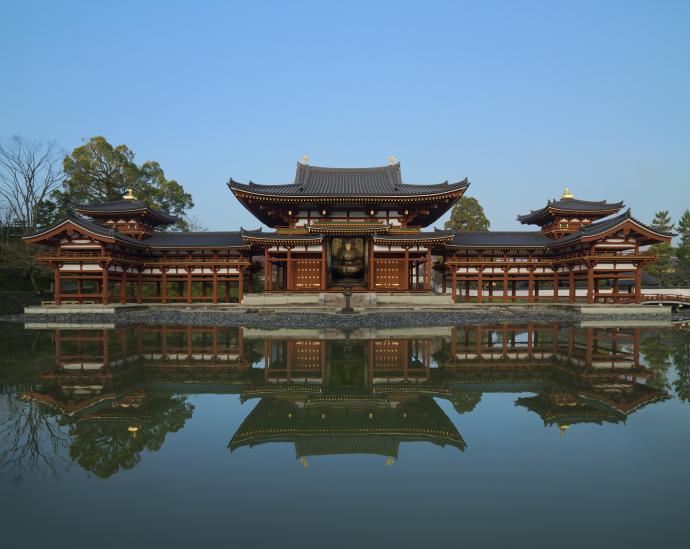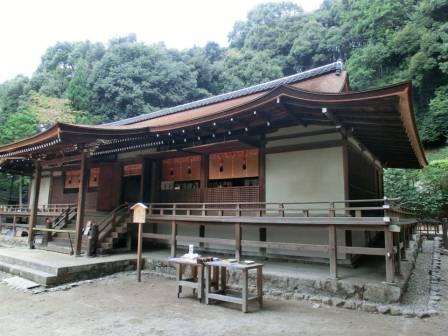Yamashiro region, Kyoto prefecture : English

Main content starts here.
World Heritage
Byodo - in Temple
In 1052, in the late Heian period (794-1185), Fujiwara no Yorimichi, the chief advisor to the emperor in Uji, converted his father’s villa into a temple. The temple’s main Phoenix Hall (Ho-o-do) was built the following year as an Amida Buddha hall, and is comprised of the main hall, which houses the enshrined Seated Statue of Amitabha Tathagata created by sculptor Jocho, the transept of the left wing, and the tail corridor at the rear. The large roof is adorned with a pair of phoenixes, while the inside is richly decorated with dazzling floral treasures and a frontispiece. The double canopy and the bodhisattvas on clouds statues are a must see. The pond in front of the Phoenix Hall is the centrepiece of the garden, which is designated as both a Historic Site and Place of Scenic Beauty, and the whole image of the temple, the pond, the Uji River and surrounding mountains are said to represent the paradise found in the afterlife. This layout has had a profound influence on the design and layouts of other temples all over the country.
| National treasures | Phoenix Hall (central building, two wing corridors, and tail corridor): four structures
Seated Statue of Amitabha Tathagata 52 wooden Bodhisattvas on clouds Pair of Phoenixes Temple bell |
|---|---|
| Visiting hours |
08:30 – 17:30Open all year round |
| Admission fee |
Garden + Museum Hoshokan: 600 yen (junior/senior high school students 400 yen; elementary school students 300 yen) *Entry into Phoenix hall costs an additional 300 yen |
| Inquiries | Byodo-in Temple (external link)TEL: 0774-21-2861 |
| Address | 116 Ujirenge Uji-shi |
| Nearest station | 10 minute walk from either Uji station, JR Nara line, or Uji station, Keihan line |
| Car parking availability | No parking available |
Ujigami Shrine
Ujigami Shrine and the neighbouring Uji Shrine were, until the Meiji period (1868 – 1912), collectively known as the Rikyukamisha. The haiden hall situated at the front of the shrine grounds dates back to the early Kamakura period (1185 – 1333) and is built in the shinden-zukuri, or Heian period palatial style. Its roof is also a beautiful example of the sugaruhafu roof style. The honden hall was built in the late Heian period (794 – 1185) as is the oldest surviving original Shinto shrine. The inner shrine is built in a certain style, whereby the three structures are lined side-by-side, and share a common roof covering. The shrine grounds also encompass Kasuga Shrine, a smaller auxiliary shrine, as well as Kiriharasui spring, one of the 7 famous natural springs around Uji.
| National treasures | Haiden and Honden of Ujigami Shrine |
|---|---|
| Visiting hours |
08:00 – 16:30Open |
| Admission fee | - |
| Inquiries | TEL: 0774-21-4634 |
| Address | 54 Uji-yamada, Uji-shi |
| Nearest station |
20 minute walk from Uji station, JR Nara line; 10 minute walk from Uji station, Keihan line |
| Car parking availability | No parking available |